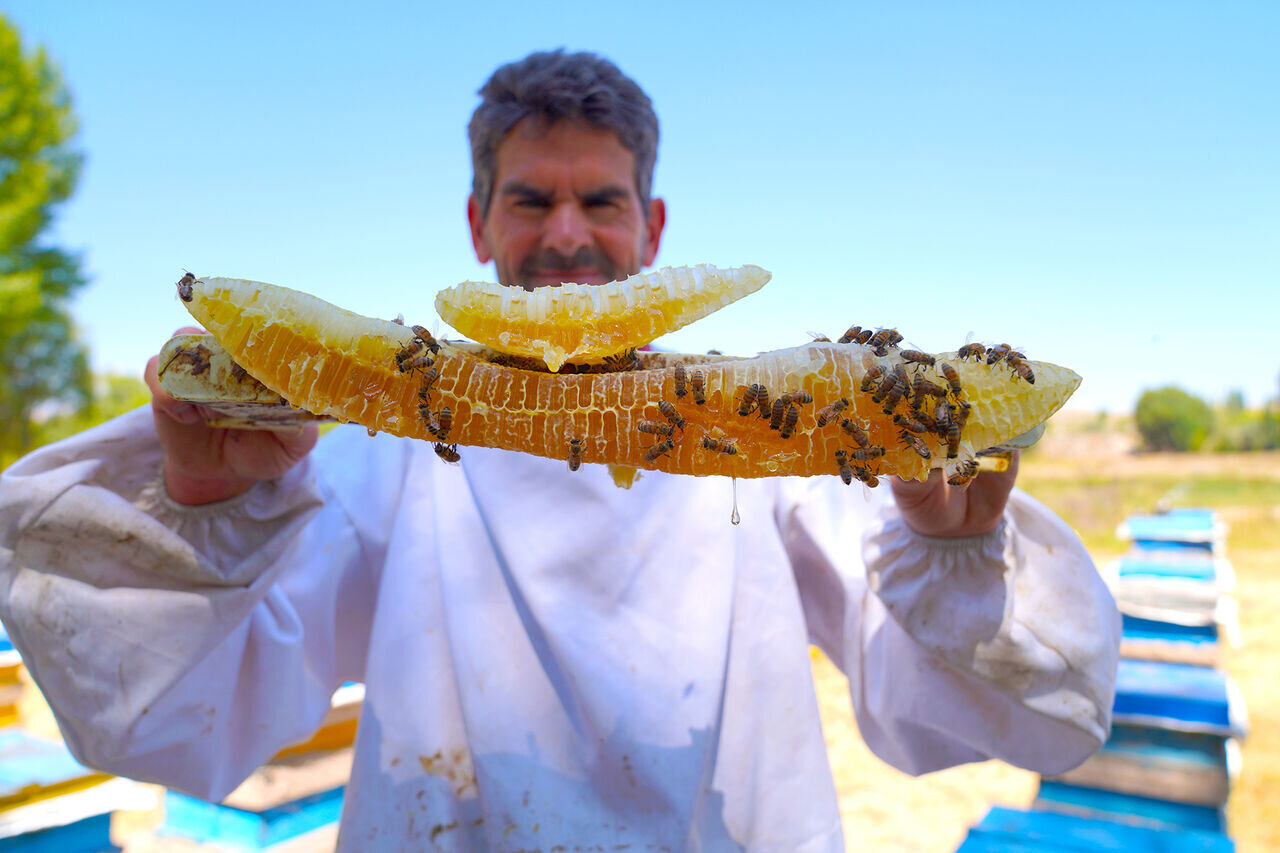Annual honey exports rise 20% despite policy hurdles

TEHRAN – Iran’s honey exports grew by 20 percent in the previous Iranian year (ended on March 20), according to the official in charge of the country’s beekeeping development plan. However, industry leaders warn that policy-related export barriers continue to threaten the sector’s survival.
Hossein Akbarpour, who leads Iran’s national beekeeping development project, said on Tuesday that honey exports reached 1,873 tons in the past year.
He added that beekeeping plays a significant role in economic growth given the health-oriented nature of its products.
"Iran currently ranks fourth in the world in honey production," he said, citing global annual production at about 2.13 million tons, while Iran’s share stands at 128,000 tons, based on the most recent national survey.
According to Akbarpour, Iran’s beekeeping industry generates nearly 90 times more benefit for the agricultural sector than its direct inputs. Honey exports in 2023 stood at roughly 1,504 tons.
He estimated the country’s honey export potential at a minimum of 5,000 tons annually, with plans to achieve a consistent 20 percent year-on-year growth rate.
As part of Iran’s Seventh National Development Plan, 47 new production chains in the beekeeping sector are to be launched across provinces, tailored to local capacities and consumption, Akbarpour said.
Currently, the average honey yield per modern hive in Iran is about 12 kilograms. The total capital invested in Iran’s beekeeping industry is valued at 960 trillion rials (around $1.92 billion), broken down into $660 million for production, $740 million for bee colonies, and $520 million for equipment.
Akbarpour also warned of threats facing the sector, including land-use changes, chemical pesticides in agriculture, and environmental degradation caused by climate change and rangeland destruction.
Export policy threatens industry viability, say beekeepers
In a separate interview, Abdolreza Bigonah, head of Iran’s Association of Beekeepers and Honey Producers, said that export restrictions remain the biggest challenge for producers and threaten the entire industry’s future.
“Due to export hurdles and the mandatory repatriation of foreign currency earnings at state-set exchange rates, honey exports have dropped below 1,000 tons,” he told IRNA in Ardebil.
“As someone who used to export honey, I’ve stopped doing so for five years and have even cut back production, he complained.
Bigonah emphasized that without exports to absorb surplus domestic production, prices will stagnate in the local market, ultimately dismantling the industry and costing Iran its reputation in global honey markets.
He put Iran’s honey output last year at 127,700 tons, with domestic consumption at about 65,000 tons. The remainder must be exported to maintain industry sustainability, he added.
Bigonah warned that the continuation of current policies could doom Iran’s beekeeping industry. “Packaging, retail, and beekeepers’ livelihoods are all tied to production. The only way out is to ease export regulations.”
He recalled that prior to 2018, agricultural exports — including honey — were exempt from taxes and currency repatriation requirements. But following changes in foreign currency laws that year, exporters have been required to sell their foreign currency proceeds at the government’s “NIMA” exchange rate, which he said is economically unviable.
EF/MA
Leave a Comment